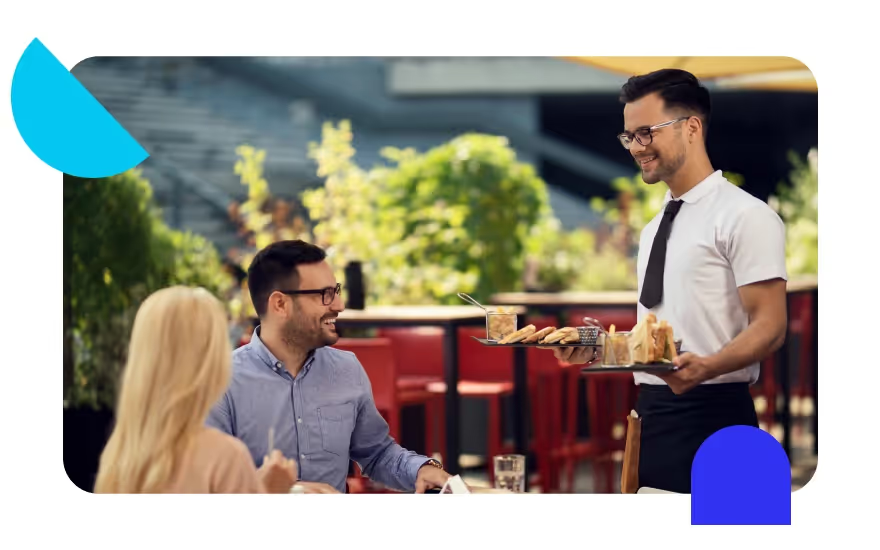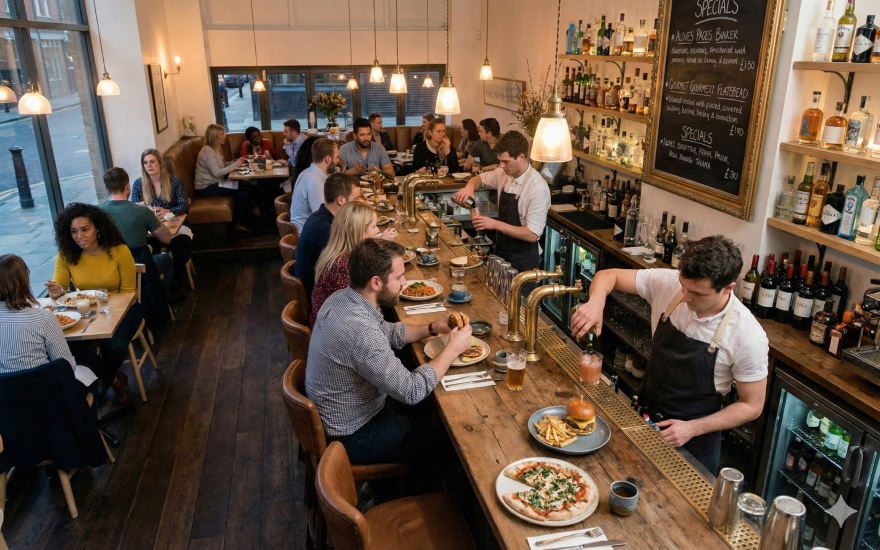How Self-Ordering Kiosks Are Redefining Restaurant Experiences

From digital ghost kitchens to robot servers, the restaurant industry – and all of the various technologies associated with it – is rapidly evolving. In particular, self-ordering kiosks are one of the most popular technologies of the past decade. They’re making huge strides in adoption across the quick-service and fast casual scene and redefining restaurants as we know them. From 2017 to 2027, the self-ordering kiosk market is expected to nearly triple in size. In this article, we’re going to explain why.
What is a Self-Ordering Kiosk?
A self-ordering kiosk (or self-serve kiosk) is typically a touch-screen terminal found in restaurants, fast-food chains, or retail stores. Instead of interacting directly with a cashier or salesperson, customers can place orders for food, beverages, or other products on the machine. In a restaurant, for example, that information will be sent directly to the back-of-house staff who will prepare the order.

A Brief History of the Self-Serve Kiosk
The history of self-service dates back to the 1880s, when the first vending machines were developed, but the first-ever interactive kiosk (as we know them today) was actually developed in 1977 to help people with directions, not food service.
“The Plato Hotline” was a voice response unit with a – then groundbreaking – plasma touch screen interface. The unit helped students and visitors at the University of Illinois Urbana-Champaign with information on where to find movies, maps, directories, bus schedules, and more.
The technology of the self-serve kiosk has been around for decades. You’ve probably encountered one while walking around a major city or your favorite museum, but it only recently started to pick up steam in the restaurant industry.
What are the Benefits of a Self-Ordering Kiosk for a Restaurant?
One of the primary benefits of a self-ordering kiosk is that, by and large, customers prefer them.
According to a survey of 1,000 Americans from PlayUSA, “66% would choose a self-service kiosk over a human-run checkout,” and “84% say they like self-service kiosks.” When you look at that data along generational lines, a clear (and unsurprising) trend emerges: younger customers prefer self-serve kiosks while the older crowd tends to be a bit more resistant. As the younger generations become a greater share of the dining public, this suggests that self-ordering kiosks are here to stay.
Other benefits include operational efficiencies and decreased labor costs. According to our 2024 State of the Industry Report, “self-serve kiosks enhance operational efficiency and reduce labor costs by 25%, while boosting revenue by up to 20%.” Since they decrease the need for front-of-house staff, restaurants can focus more on the back-of-house. Furthermore, since a front-of-house staff member adds an additional touchpoint in the ordering process, having the kiosk convey the order directly to the kitchen staff decreases friction and potential mistakes.
In short: Customers like them. They make the restaurant more efficient. They decrease labor costs. They aren’t merely a passing trend. What’s not to like?
For many, while they might decrease recurring costs, the initial upfront investment can seem like a massive barrier to entry.

How Much is a Self-Ordering Kiosk?
A self-ordering kiosk can cost anywhere from $2,000 to $10,000 depending on your restaurant’s specific needs. A tabletop ordering system is obviously going to cost much less than a freestanding kiosk with a lot of custom features. On average, a self-ordering kiosk costs about $3,500, and that’s before the cost of installation.
Some companies offer kiosks for rent, which can decrease costs and allow you to test out the technology before making such a significant investment. Then, if it doesn’t work for your business, you can go back to what you were doing without having to remove and sell the machines.
Is a Self-Ordering Kiosk a Good Investment?
Put simply: yes, a self-ordering kiosk is a good investment. If you can eliminate just one front-of-house staff member with a self-ordering kiosk, you can recoup the investment and earn additional revenue within the first year of ownership. Realistically, since kiosks run 24/7, they can do more work than just one team member.
Since most operators have grown used to the constant turnover in the industry, they aren’t even aware of all the time costs associated with hiring. Between advertising the job opening, reviewing resumes and references, and conducting interviews the average cost of onboarding a new employee is around $4,100. With the average restaurant employee’s tenure being only 110 days, this is a cost that the average restaurant owner pays at least three times a year (for a total of a whopping $12,300 in ongoing hiring costs for just one position).
Furthermore, the median salary for a fast food worker in the United States is around $27,000. Even the lowest-paid employees, at $22,000, still cost more than twice as much as the most expensive self-ordering kiosk.

Some kiosk providers have ongoing membership and software costs, but these are still a fraction of the costs associated with hiring a person to do those same tasks. Since customers tend to prefer self-ordering kiosks anyway, it’s definitely something worth considering.
It should be noted, though, that every restaurant is unique. Based on the numbers, it would almost definitely be a good investment in the long run – but there are negative ways in which self-serve kiosks may affect your brand image and customer satisfaction.
As with anything, before falling in love with the numbers, it’s a good idea to analyze whether or not it makes sense for your specific situation.
Conclusion: How Self-Ordering Kiosks are Redefining Restaurant Experiences
Technology is shaping the future in ways that are difficult to predict. Whenever you read headlines about the latest technology it can feel nearly impossible to tell whether or not it’s legitimately useful or just a passing trend.
Generally, though, just like how cell phones revolutionized the world of communication, if it’s easier, more convenient, and priced appropriately, it will eventually be widely adopted. Self-ordering kiosks fit all of those criteria.
Another technology that’s shaping the restaurant industry is one that’s much closer to home: all-in-one software solutions for restaurant managers and operators, like Push. From hiring and onboarding to time tracking and payroll, our software helps restaurant owners centralize and streamline day-to-day tasks. Book a demo to learn more.



